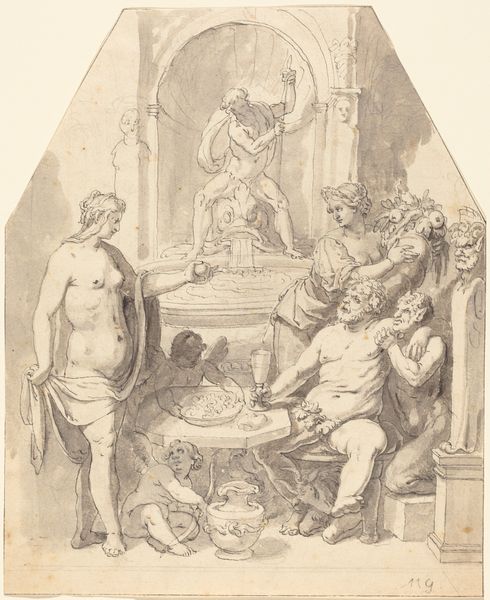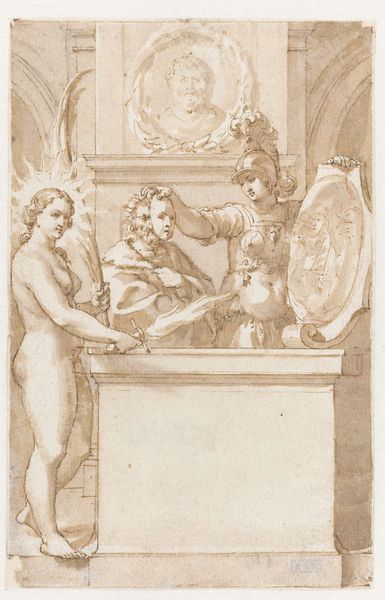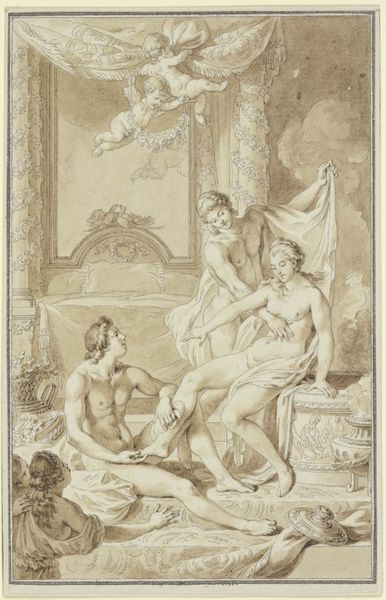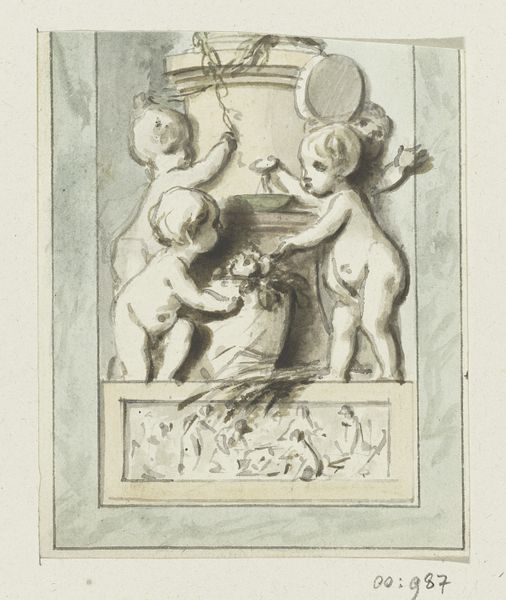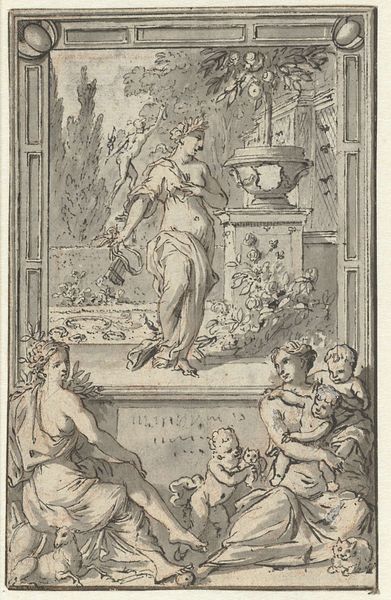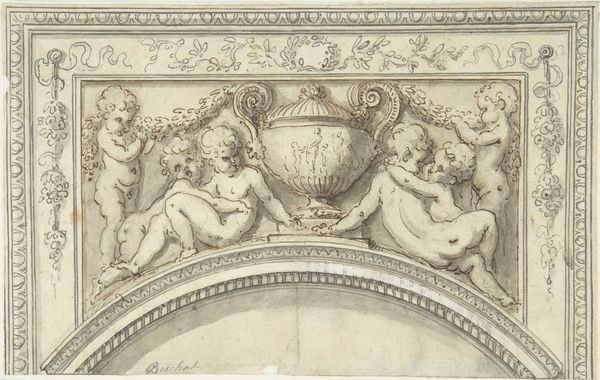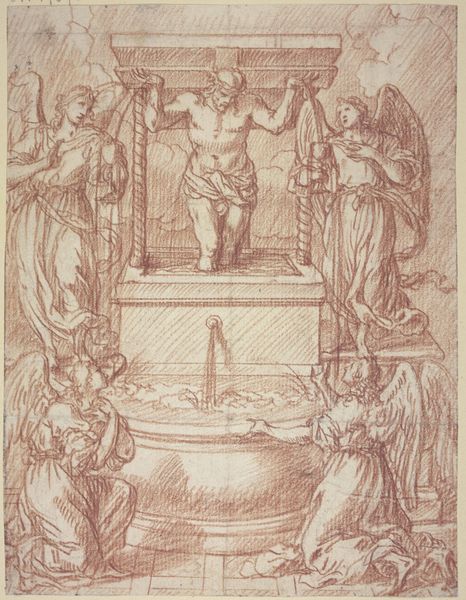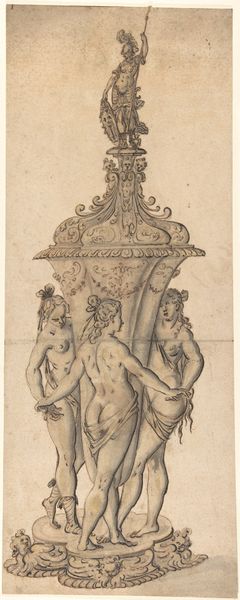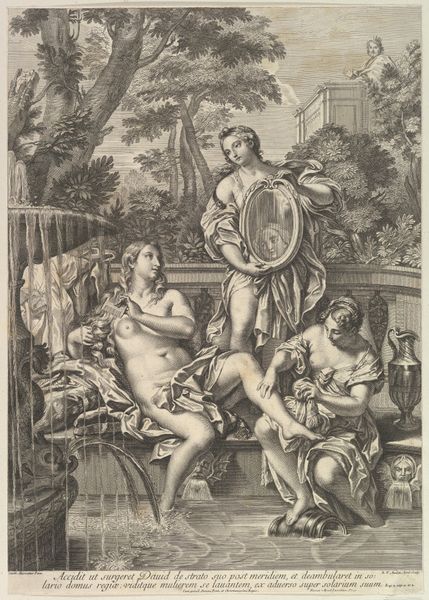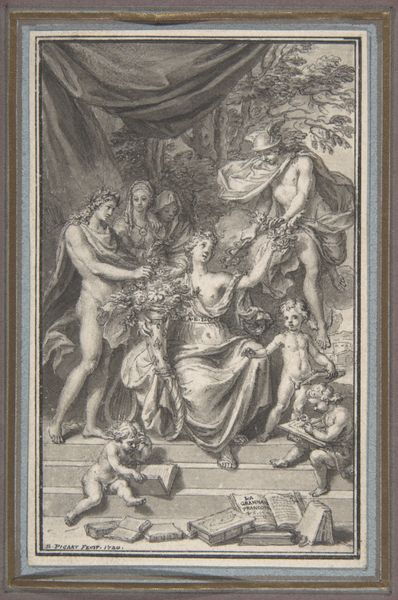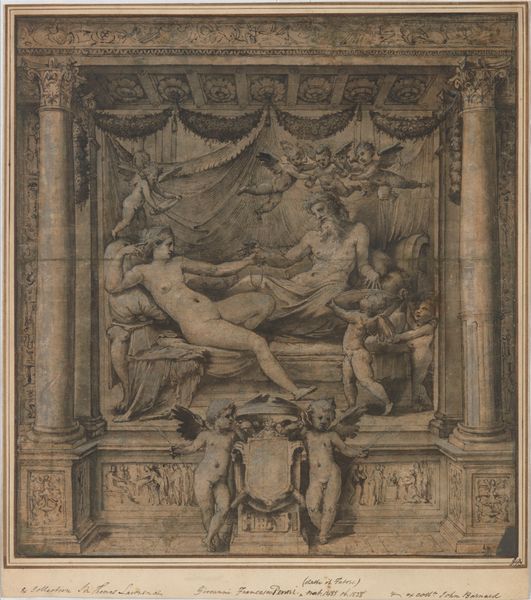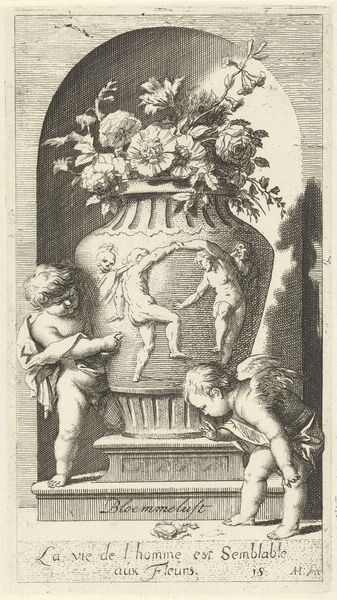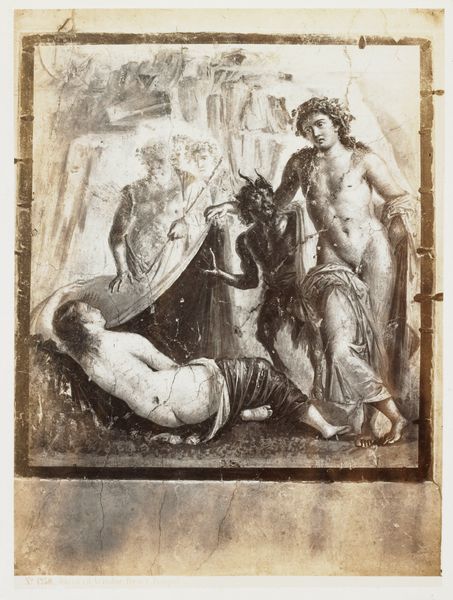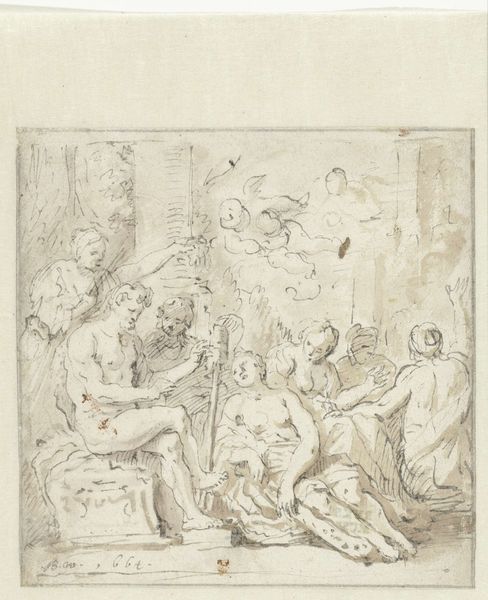
drawing, watercolor, pen
#
drawing
#
allegory
#
baroque
#
watercolor
#
coloured pencil
#
pen
#
watercolor
Dimensions: height 385 mm, width 252 mm
Copyright: Rijks Museum: Open Domain
Curator: Let’s take a closer look at Dionys van Nijmegen's "Ontwerp voor een decoratieve schildering met een fontein," dating anywhere from 1715 to 1798. What strikes you first about this baroque drawing? Editor: The monochromatic feel really contrasts with what I think of when I imagine decorative fountains. It’s like a ghostly echo of opulence, a draft of a dream of abundant water. Curator: That's interesting. The dream analogy feels right. As a "design for a decorative painting," it uses pen, colored pencil, and watercolor to illustrate what might then be realized in stucco or even actual hydraulics. This drawing is a proposed design, but we are left with just that: a proposal. Editor: Precisely. It brings to mind the whole system of skilled labor involved, not only van Nijmegen, but the artisans needed to execute such a design. We're left with the imagined skill rather than the embodied, practical expertise of making something that lasts. And I do find that a bit sad. Curator: You're right; this hints at lost skills and forgotten collaborations. It's interesting that you consider it to have melancholic associations, whereas for me the allegory enlivens this image and its narrative, almost breathing life into stone! The artist gives depth to these otherwise muted materials by positioning figures from mythology in dialogue with one another, creating an atmosphere of storytelling through water. Editor: Oh, yes, I definitely see that. But think about how each part would be crafted and put together – consider the labor needed to sculpt those figures or manage the water flow in the basins... and, in this representation, it is all still quite inert. I mean it's a plan more than a promise of a working structure. Curator: Well, I'm taken by its incompleteness! It leaves my imagination lots of room to play in deciding what kind of setting or occasion this drawing might inspire! Ultimately I see possibility and your perspective adds a much appreciated consideration of production in realizing the object. Editor: Exactly. In our different readings of its making, this image highlights not only artistic expression but the societal processes behind realizing such creations, an exciting glimpse into past aesthetics!
Comments
No comments
Be the first to comment and join the conversation on the ultimate creative platform.
